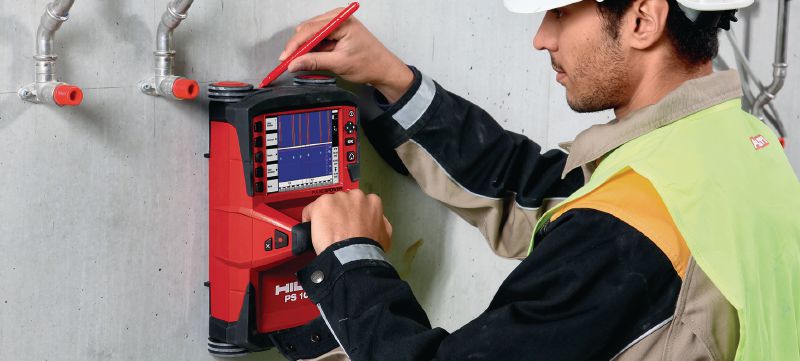The Ultimate RainierGPR Concrete Scanning Option Explained
The Ultimate RainierGPR Concrete Scanning Option Explained
Blog Article
Checking Out the Midst: A Comprehensive Overview to Concrete Scanning and Its Diverse Applications
In the realm of building and construction and infrastructure advancement, the precise process of concrete scanning holds a critical function in guaranteeing the structural stability and safety and security of tasks. As innovation continues to develop, the applications of concrete scanning have actually expanded far beyond plain surface-level assessments. From discovering rebar and post-tension cable televisions to mapping out avenues and gaps concealed within concrete structures, the capabilities of modern-day scanning techniques are both impressive and necessary. The true deepness of concrete scanning's possible reaches even further, branching right into unexpected fields and sparking ingenious solutions. The interconnected web of opportunities that concrete scanning presents is not only remarkable however also essential for the improvement of various markets.
Value of Concrete Scanning
Comprehending the importance of concrete scanning is important in making sure the safety and stability of frameworks during construction and renovation jobs. Concrete scanning makes use of sophisticated technologies such as ground-penetrating radar (GPR) and electro-magnetic induction to detect ingrained objects, spaces, or other anomalies within concrete frameworks - RainierGPR Concrete Scanning. By performing thorough scans before boring, cutting, or coring right into concrete, building teams can avoid unexpected damages to essential structural elements like rebar, channels, or post-tension cables. This positive method not only avoids pricey repairs and project hold-ups however likewise enhances overall building safety and security by minimizing the risk of structural failures or collapses because of endangered stability.
Furthermore, concrete scanning plays a pivotal duty in making sure compliance with building regulations and guidelines that mandate the security of existing architectural components throughout building and construction tasks. By accurately mapping out the interior structure of concrete, scanning technologies enable construction specialists to make enlightened decisions that support the architectural security and resilience of buildings and facilities jobs. Basically, the significance of concrete scanning lies in its capability to secure both the structural stability and the employees included in construction endeavors.
Technologies Used in Concrete Scanning
Concrete scanning relies on advanced innovations such as ground-penetrating radar (GPR) and electro-magnetic induction to accurately detect ingrained items and abnormalities within concrete structures. Ground-penetrating radar runs by emitting high-frequency electro-magnetic waves right into the concrete.
Electro-magnetic induction, on the various other hand, functions by producing magnetic fields around a concrete framework with a transmitter coil. When metal objects are existing within the concrete, they disrupt these magnetic fields, causing eddy currents to stream with the metal. By measuring the adjustments in the magnetic fields with a receiver coil, the system can identify the place of metallic items in the concrete.
These advanced innovations play a vital duty in non-destructive testing, making sure the security and honesty of concrete frameworks in go to the website various markets.
Applications in Building Industry
Within the construction industry, concrete scanning technology discovers diverse applications that improve task effectiveness and safety. Additionally, concrete scanning is used for situating voids, such as air pockets or areas of damage within concrete, which can jeopardize the overall stamina of a structure. Concrete scanning plays an important duty in quality control by validating the thickness of concrete covers over support, making sure compliance with layout requirements and criteria.

Safety Advantages of Concrete Scanning
In the realm of building security, the implementation of concrete scanning technology presents a paramount benefit in preemptively identifying prospective hazards and fortifying architectural honesty. By using advanced scanning approaches such as ground-penetrating radar (GPR) and electromagnetic induction, building and construction teams can accurately find rebar, post-tension cords, avenues, and other concealed things within concrete structures. This positive approach substantially minimizes the risk of accidental strikes during exploration, cutting, or coring activities, consequently preventing pricey damages, injuries, and task hold-ups.
In addition, concrete scanning enhances employee safety and security by providing real-time details about the structural condition of concrete elements. By resolving possible security problems immediately, concrete scanning adds to creating Full Article a safe and secure working atmosphere and reducing the possibility of structural failings or mishaps on construction websites.
Future Trends in Concrete Scanning
Emerging innovations in scanning modern technology are positioned to reinvent the field of concrete inspection and analysis. One significant fad that is obtaining traction is the combination of synthetic intelligence (AI) and machine learning formulas into concrete scanning tools. By taking advantage of the power of AI, these systems can evaluate vast quantities of data gathered throughout scanning processes to supply even more precise and comprehensive understandings into the condition of concrete structures. This can aid in detecting concealed defects, forecasting potential structural failures, and even suggesting upkeep approaches.
One more substantial trend is the development of more easy to use and mobile scanning devices. Miniaturization of scanning devices permits easier access to restricted rooms and remote locations, making assessments a lot more effective and thorough. Furthermore, advancements in wireless interaction technologies make it possible for real-time information transfer and evaluation, promoting quicker decision-making procedures.
Additionally, there is a growing concentrate on sustainability in concrete scanning modern technologies - RainierGPR Concrete Scanning. Makers are significantly including environmentally friendly materials and energy-efficient features right into their devices to decrease ecological impact. These future trends are established to improve the performance, precision, and sustainability of concrete click here for info scanning techniques, forming the sector's future landscape
Verdict
Finally, concrete scanning plays a crucial duty in the building and construction market by making certain the security and efficiency of different jobs. By utilizing sophisticated technologies, such as GPR and radar imaging, specialists have the ability to accurately discover prospective threats within concrete structures. The applications of concrete scanning are huge and proceed to evolve, making it a vital tool for keeping the honesty of structures and facilities. As innovation advancements, the future of concrete scanning holds promising growths for improving building and construction processes.

Report this page